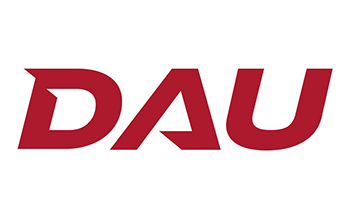New Developments in Project Management – An Interview with Amber Young
Tim Fritz and Amber Young sat down and talked new developments in the DOE space. Learn more about IP2M METRR, earned value innovations, and how new tech like AI and Machine Learning is impacting the industry today!

Tim Fritz:
Hey everybody. My name is Tim Fritz. I’m the business development director here at Aztec, and I’m really excited to have with me today one of our earned value management consultants. Amber Young supports our Department of Energy client in in the PM offices. So Amber, first of all, thank you for joining us here quick today. Just wanted to, you know, start by getting the quickest overview of your role.
What are you doing within DOE and PM?
Amber Young:
Hi everyone. I’m amber young and I have been supporting the Department of Energy’s Office of Project Management for the past four years. Completely and have done some prior work on all other algorithms and other types of things for them before and my role is really to help the PM 30 group that works with EVMS compliance and the Cognizant Authority of surveillance across the complex. I also help support the PARS team and different projects within that have to do with the data analytics and benchmarking metrics development and I’ve done a little bit of work with policy as well helping to contribute to different guidance documents within the Department of Energy.
Tim Fritz:
Excellent. So Amber, for those who don’t know, DOE is doing some really cool things with what they call IP2M METRR, and I will let you explain that and actually talk to the acronym itself. And then also you know how they are leveraging IP2. Excuse me, IP2M METRR to do things a little bit differently in the EVMS industry.
So what is IP2M METRR and how are you guys using it?
Amber Young:
Right. So IP2M METRR was developed by Arizona State University in collaboration with the Department of Energy. It stands for Integrated Project, program management, IP2M and the METRR is the maturity and environment, total risk rating and it’s a novel way to assess a project or program along two different axes. One is the environment – actually that’s on the X – and then the maturity on the Y axis and what has been found statistically through a survey of industry and government agencies, is that environment really drives maturity. So the novel really amazing new way of looking at project and program management is to really focus on the environment and all the factors that contribute to the success of a program and contribute to having a mature EVMS in place to be able to make decisions from your EVMS be predictive assessed risk. But really, looking at how the team cooperates and coordinates together in their environment first and foremost, so that’s in a nutshell, yeah.
Tim Fritz:
Very cool. So, you know, really bringing in almost like the soft skill side of PM is that, you know, fairway of framing, you know, the environmental side of it.
Amber Young:
Yes, there are four categories. Culture, people, practices and resources. So there’s a little blend of soft and actual concrete. What does the contract say? What are the are the tools integrated? But then there’s also the culture, which has to do with trust and transparency and synergy. So yeah, it’s a blending of both.
Tim Fritz:
Very cool, very cool. So, you know, given that the DOE you know obviously with EVMS we have reporting requirements. So DOE given you know, they’re measuring some different factors, likely has different reporting requirements.
So just at a high level, you know, what are you know what are the day did in metric requirements maybe that that you see you know in your work with PM 30?
Amber Young:
Well, the newest and most exciting is the publication of the latest did that’s in JSON format. So I moved away from a comma separated value CSV format and went into Jason and we have a schema that we’ve outlined with our did across 23 different data sets and you know multiple fields within and all of the criteria are available and easy to search and find and understand within the DOE website and also in partnership with tool vendors to be able to export that did format directly from the tools.
Tim Fritz:
So bottom line is that people have questions, they can just call you, right?
Amber Young:
Yes.
Tim Fritz:
Alright, so DOE sounds like they’re doing just some really cool things. What excites you most about what is evolving? You know, within DOE and their PM and EVMS approaches.
Amber Young:
I’m really excited about whenever we can put the data into action or making decisions and driving in, looking at insights from the data, so anything with business analytics, data visualizations, looking at different distributions and spreads. Just two weeks ago, there was a metric summit where we look deep into the EVMS compliance metrics and see how they relate and what can be removed from. From some compliance elements to be fully automated and something that we can look at in a in a more automated fashion. So that was a big driver and also looking at metrics as far as primary secondary, what impacts other areas metrics or points to investigate for further root cause analysis. So that’s really fascinating and really, really great work and love working with the teams on those. But the other part that’s really getting everyone excited is our use of AI. So our team has started to incorporate and utilize AI much, much more integrated within our daily work. So the PARS team that I work with, I know that many of those, the developers on that side are using AI to help them proofread code. So artificial intelligence chat GPT. That whole system is able to write code very well because it’s a language model and it and code is really just another language and it’s very logical and concrete. So I know a lot of our schedule. Our developers are kind of passing forward a prompt of what do I want for this code to do? Getting something back, testing it, debugging it. There’s even I’ve heard where they’ll take a code that has some bugs and pass it back to GPT and say hey, help me debug this and work collaboratively with the AI to refine what they’re doing. So I know they’re the developers are doing that, and I’ve also seen some translations where you can go from one like go from R to Python, just ask chat, GPT to translate it and it’s fully scripted code which is really, really cool. I’ve also seen it used in like 3D printing, like creating models for 3D printing or in for Children’s Games. You know, now people are excited, and they want to play with it. My son wants to write something and Minecraft, let’s write a little Roblox and write a little code and it works. So really exciting stuff. And then in my line of work, I’ve started to use AI to help me analyze and understand environmental differences in assessments that I’ve taken. So looking at thousands of comments and starting to understand and break apart where our gaps and differences and having the AI it, it helps you to look in and focus. There’s always the caution with AI that it hallucinates. So you have to read it with a really critical eye, but it is increased efficiencies and productivities. I think leaps and bounds and we’re really excited to integrate it more.
Tim Fritz:
That’s awesome. That an organization like, well, first of all in the agency, like the Department of Energy is utilizing AI. But, specifically how your group is using it on a tactical level. That’s super cool! But bottom line is, we’re going to have to get our hands on the development team and have a conversation with them too, huh?
Amber Young:
Definitely.
Tim Fritz:
Hey, thank you so much for your time. I really appreciate it and we’ll look forward to talking to you soon.
Amber Young:
All right. Thank you.
Tim Fritz:
Alright, take care.
Amber Young:
See you soon. You too, bye bye!
Subscribe to our Newsletter:


The essential guide to help the DOD and DOE understand and implement EVM


